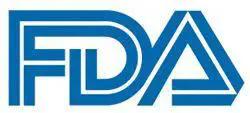News
Article
FDA Approves Osimertinib Plus Chemo for EGFR-Mutated NSCLC
Author(s):
The FDA has approved osimertinib (Tagrisso) plus chemotherapy for use in patients with locally advanced or metastatic non–small cell lung cancer harboring EGFR mutations.
FDA

The FDA has approved osimertinib (Tagrisso) plus platinum-based chemotherapy for use in patients with locally advanced or metastatic non–small cell lung cancer (NSCLC) harboring EGFR exon 19 deletions or exon 21 L858R mutations, as detected by an FDA-approved test.1,2
The regulatory decision is supported by findings from the phase 3 FLAURA 2 study (NCT04035486), in which osimertinib plus chemotherapy (n = 279) significantly improved progression-free survival vs osimertinib alone (n = 278) in this population, at a median of 25.5 months (95% CI, 24.7-not evaluable) vs 16.7 months (95% CI, 14.1-21.3), respectively (HR, 0.62; 95% CI, 0.49-0.79; 2-sided P <.0001).
Overall survival data were immature at the time of the current analysis, with only 45% of prespecified deaths for the final analysis reported. However, no trend toward detriment was observed with the osimertinib combination.
About FLAURA2
The randomized, multicenter, open-label, phase 3 study enrolled patients with locally advanced or metastatic NCSLC harboring an EGFR exon 19 deletion or exon 21 L858R mutation who did not have prior exposure to systemic treatment for advanced disease. They also needed to have measurable disease by RECIST v1.1 criteria and a World Health Organization (WHO) performance status of 0 or 1.
Study participants were randomly assigned 1:1 to receive osimertinib at 80 mg twice daily plus pemetrexed at 500 mg/m2 and investigator's choice of cisplatin at 75 mg/m2 or carboplatin at area under the curve 5 on day 1 of 21-day cycles for 4 cycles followed by osimertinib at 80 mg daily and pemetrexed at 500 mg/m2 every 3 weeks, or osimertinib at 80 mg once daily. Treatment continued until intolerable toxicity or investigators determined that clinical benefit was no longer being derived.
Randomization was stratified based on race (Chinese/Asian vs non-Chinese/Asian vs non-Asian), WHO performance status (0 vs 1), and method leveraged for tissue testing (central vs local).
The trial's primary end point was PFS by investigator assessment and RECIST v1.1 criteria, and OS served as a key secondary end point. Additional end points of interest included objective response rate (ORR) and duration of response (DOR).
The median patient age was 61 years (range, 26-85), with 39% of patients aged 65 years or older. More than half of patients were female (61%), Asian (64%), never smokers (66%, and had a WHO performance status of 1 (63%). The majority of patients (96%) had metastatic disease. Regarding mutational status, 61% had EGFR exon 19 deletions and 38% had EGFR exon 21 L858R.
Osimertinib plus chemotherapy elicited an ORR of 77% (95% CI, 71%-82%) vs 69% (95% CI, 63%-74%) with single-agent osimertinib. The median DORs for these respective arms were 24.9 months (95% CI, 22.1-not evaluable) and 17.9 months (95% CI, 15.2-20.9%).
All participants had available baseline brain scans that were reviewed by BICR using modified RECIST criteria. Fourteen patients of patients were found to have central nervous system (CNS) measurable lesions.
In those with measurable CNS lesions who received osimertinib plus chemotherapy experienced a CNS ORR of 80% (95% CI, 64%-91%), which included a complete response (CR) rate of 48% and a partial response (PR) rate of 33%). Those in the osimertinib monotherapy arm experienced a CNS ORR of 76% (95% CI, 60%-89%), which was comprised of CR and PR rates of 16% and 61%, respectively. In the osimertinib/chemotherapy and osimertinib arms, 75% and 50% of responders continued to respond for at least 6 months; 65% and 34% of patients continued to respond for at least 12 months.
Safety
The median duration of exposure to the osimertinib combination was 22.3 months. For single-agent osimertinib, the median duration of exposure was 19.3 months.
Serious adverse reactions occurred in 38% of patients who received osimertinib plus chemotherapy, and 7% experienced fatal toxicities. Adverse effects (AEs) led to dose interruptions or reductions for 44% and 10% of patients, respectively. Eleven percent of patients experienced AEs that resulted in treatment discontinuation.
The most common AEs experienced by 10% or more of patients who received osimertinib plus chemotherapy were diarrhea (any grade, 43%; grade ≥3, 2.9%), stomatitis (31%; 0.4%), rash (49%; 2.5%), nail toxicity (27%; 0.7%), dry skin (24%; 0%), and pruritus (8%; 0%).
The most common laboratory abnormalities that worsened from baseline included leukopenia (all grade, 88%; grade ≥3, 20%), thrombocytopenia (85%; 16%), neutropenia (85%; 36%), lymphopenia (78%; 16%), and increased blood creatinine (22%; 0.4%).
References
- FDA approves osimertinib with chemotherapy with chemotherapy for EGFR-mutated non-small cell lung cancer. FDA. February 16, 2024. Accessed February 16, 2024. https://www.fda.gov/drugs/resources-information-approved-drugs/fda-approves-osimertinib-chemotherapy-egfr-mutated-non-small-cell-lung-cancer
- Tagrisso. Prescribing information. AstraZeneca Pharmaceuticals LP; 2024. Accessed February 16, 2024. https://www.accessdata.fda.gov/drugsatfda_docs/label/2024/208065s030lbl.pdf








